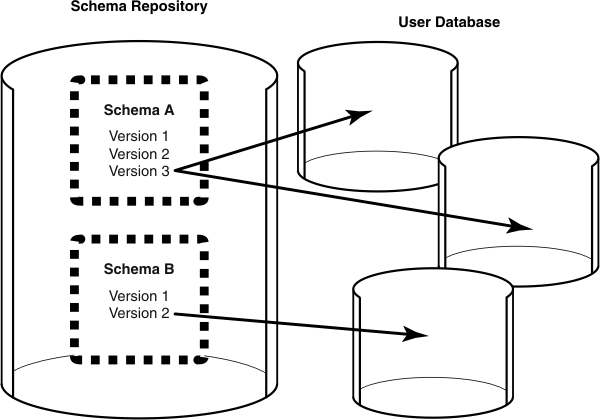Database sets
A database set consists of a schema repository and its associated schemas and user databases. The figure shows the relationship between the three components of a database set: user databases, schemas, and schema repositories.
Relationship between database set components user databases, schemas, and schema repositories shows the relationship between the three components of a database set: schema repository, schemas, and user databases.

User databases store change requests and user data and follow the process rules defined by the schema. Users change data in the databases when they add or modify information about change requests; these changes have no effect on the schema. User databases contain a record for each change request. As the change request moves through its lifecycle, the data stored in this record also changes. To manage content and to increase efficiency, it is possible to have multiple user databases, all associated with a single schema. For example, if three projects use the same process model for correcting defects, a database for each project can be created and all three can be associated with the same schema.
A schema defines the way that data is stored and changed in a user database. The schema determines how users access the database, what actions users can or must take, and the workflow of the change request. Schemas allow the process to be automated and enforceable; they also include notification features, such as e-mail. Schemas contain a description of the states and actions of the model, the structure of the data that can be stored about the individual change request, any hook code or scripts that are used to implement business rules, and the forms and reports used to view and provide information about the change request.
Schemas are stored in the schema repository, including all versions of those schemas. Schema repositories do not store change requests or user data.
Schema repositories and user databases must be physically managed by a database management system. Supported database management systems include IBM® DB2®, Microsoft™ SQL Server, and Oracle RDBMS. Administrators must create an empty database before they create and configure a schema repository or user database. Administrators create these empty databases with tools provided by the database vendor before they set up the change-request environment.